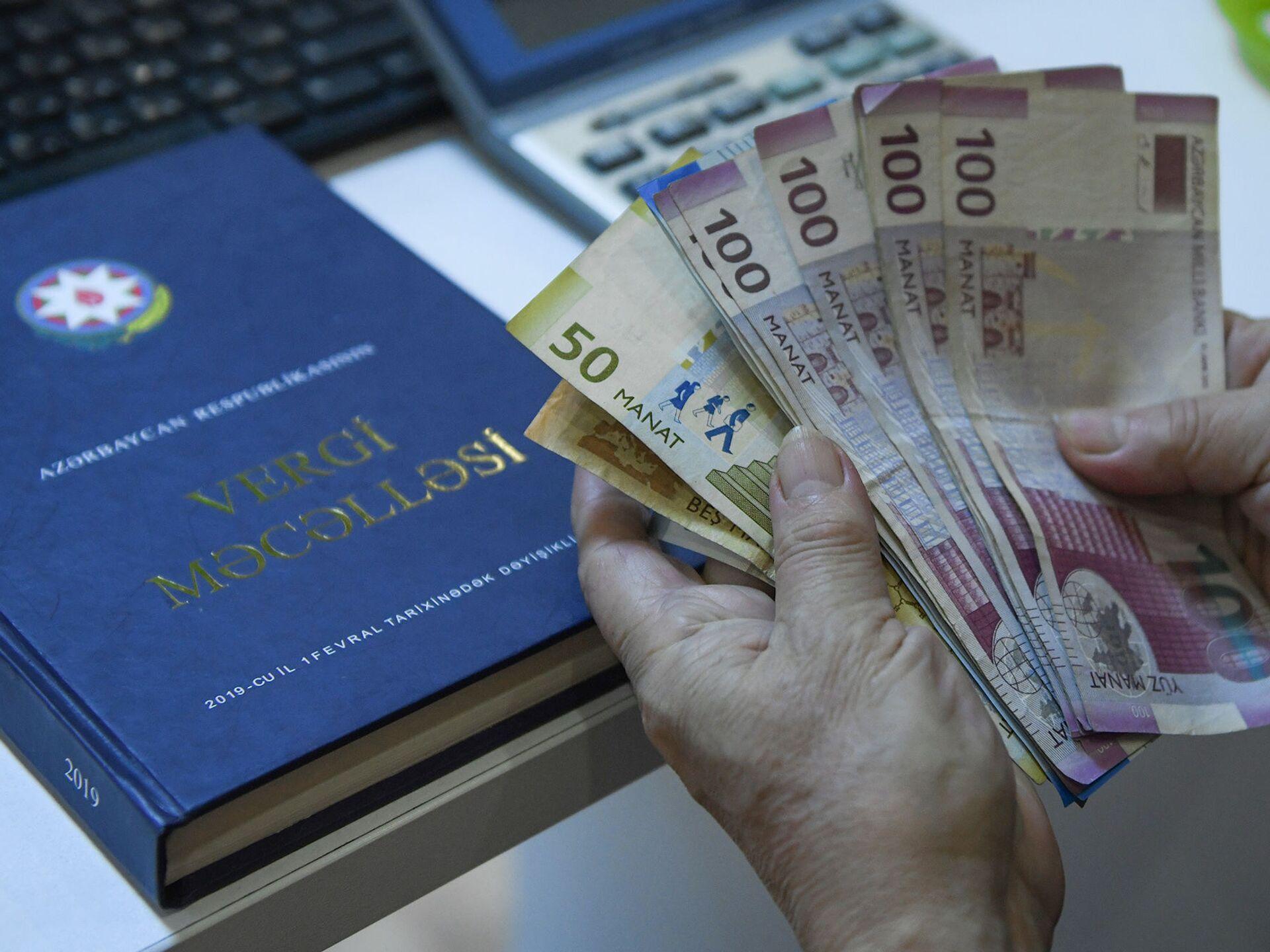Azerbaijan's non-oil choice What is the state budget formed of?
According to the State Tax Service (STS) operating under the Ministry of Economy of Azerbaijan, more than 11 per cent growth of fiscal revenues to the state budget from the non-oil sector was recorded in January-March 2024. This is a very good indicator against the background of a general decline in tax collections in the first quarter of this year, which is mainly due to the decline in production and exports in the oil and gas sector.
The good dynamics of tax indicators in the non-oil sector indirectly indicate that the consequences of last year's recession have been overcome. This is also evidenced by the growth of production and exports in non-oil sectors, as well as an increase in the number of active taxpayers.
The beginning of 2024 was marked by improvement of economic growth indicators in Azerbaijan: according to the State Statistics Committee, a five per cent GDP growth was recorded in January, which is not bad, especially in comparison with the low dynamics of economic development (1.1 per cent) at the end of last year.
The non-oil sector was the driver of economic development, and despite the downturn in the oil industry, the non-oil segment grew by 12.3 per cent. Next month, these indicators were multiplied, and the nominal volume of Azerbaijan's GDP in January-February reached almost AZN 18.577 billion ($10.9 billion) with real economic growth of 5 per cent. Once again, the country owed these successes to 10.1 per cent growth in the non-oil sector.

On the contrary, indicators in the oil and gas sector decreased by 0.7 per cent in the first two months. It should be noted here that the decline in the country's raw materials GDP has been continuing for several years due to the objective decline in oil production at the Azeri-Chirag-Gunashli (ACG) field and other offshore sites. Thus, in 2023 oil production with gas condensate in the country passed 30.189 million tons, which is 7.5 per cent lower than in 2022. This negative trend continued in January-February of the current year: production amounted to about 4.772 million tons, down 6.7 per cent against the first two months of last year.
In turn, last year saw a decline in the country's revenues from oil and gas exports due to the global recession and lower prices for hydrocarbons. Today it is difficult to judge how the global energy market situation will develop by the end of 2024, but since the second half of March, the trend of rising oil prices has intensified, and, judging by the estimates of foreign experts, this year the average price of Brent oil will remain within the range of $80-100 per barrel.
One way or another, but the forecasts of the country's government regarding the economic results of the current year are generally positive: thus, the Central Bank of Azerbaijan (CBA) forecasts economic growth rates in 2024 within 3-3.5 per cent, the Ministry of Economy expects annual dynamics at the level of 2.4 per cent. UN experts estimate the GDP growth of the country at 2.6 per cent, the World Bank estimates this figure at 2.4 per cent, the International Monetary Fund and the European Bank for Reconstruction and Development - at 2.5 per cent, in turn, the international rating agency Fitch Ratings expects GDP growth of 2.8 per cent.
The oil and gas factor still plays a huge role in the development of the domestic economy, especially given the volume of export revenues. However, the role of the locomotive of the Azerbaijani economy today is played by the non-resource sector, which provides not only a steady growth of production and services, but also maintains a high level of exports, which reached 43.2 per cent in January-February of this year.
The importance of non-resource industries in replenishing the state budget is evidenced by the recently published data of the State Tax Service: in the first quarter of 2024, tax revenues to the state budget from the non-oil sector exceeded AZN 2.914 billion ($1.7 billion), which is 11.3 per cent higher than in the same period last year.
Moreover, during the reporting period, 68 per cent of all STS revenues were provided by the non-oil and gas sector. According to the data of the Tax Service, in January-March 2024, the collections on mandatory social insurance contributions exceeded AZN 1.3 billion ($764 million), providing a growth of 10.7 per cent compared to the first quarter of 2023.
On the one hand, the country owes these successes to the projects of new industrialization and reforms in agriculture, which have been implemented for over a decade: the key role here is given to the creation of various types of agrarian-industrial clusters, which ensured the growth of production of products with a high level of added value.
Among other things, Azerbaijan is implementing basic tasks on the qualitative transformation of the domestic economy by increasing the competitiveness of the agrarian and industrial sector and other areas of the non-oil industry in foreign markets, actively developing projects in "green" energy, digitalization of the economy and development of startups, introduction of non-cash instruments in the payment and financial sector, etc.
These opportunities, as well as large-scale reconstruction and construction works in the Karabakh region, also play the role of a driver supporting the activity of the country's business circles despite the negative impact of the global recession. Thus, according to the State Tax Service, as of April 1 this year, the number of active taxpayers in Azerbaijan increased by 0.8 per cent compared to the beginning of 2024 and amounted to 768,100 people. At the same time, the number of active VAT payers (mainly large commercial and industrial companies) in January-March increased by 3.9 per cent to 47,500 people, which also indicates favourable market conditions.

On the other hand, the fiscal authorities' successes are based on the administrative reforms and modernization of the regulatory framework of the Tax Code (TC), which have been implemented since 2019. These transformations, stimulating business development within the framework of public-private partnerships, have simultaneously reduced the volume of unrecorded profits by times, bringing the turnover of the "shadow" market into the accountable and controlled by the tax authorities. In particular, in 2023, the STS specialists ensured AZN 44.4 million ($26.1 million) reimbursement to the state budget in criminal cases initiated on the facts of tax crimes.
In general, by the efforts of the STS a large-scale digital transformation of tax administration was realized, and today the share of voluntary payments in tax revenues from the non-oil sector is close to 90 per cent. This work was actively continued in all subsequent years: for example, in 2023, an additional AZN 1.1 billion ($647 million) was transferred to the state budget as part of measures to ensure fiscal transparency.
In order to consolidate the achieved successes, as well as to improve digital platforms in accordance with the new tasks in tax administration, work on automation of tax control processes will continue in Azerbaijan this year. "The main line here is the creation of new administrative services capable of accepting changes in tax legislation, to achieve a deepening level of digitalization. In addition to the automation of electronic services provided to taxpayers, the STS is also working on the automation of tax control processes," Orkhan Nazirli, head of the State Tax Service, said in February.
"The main target areas will include simplifying tax administration through digitalization, reducing the time spent by businesses on tax compliance as a result of increased availability and quality of tax data, as well as the possibility of building information systems based on artificial intelligence modules," he added.








